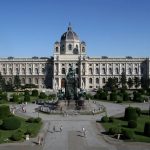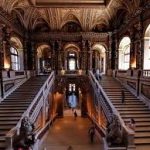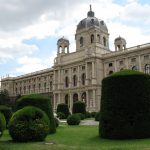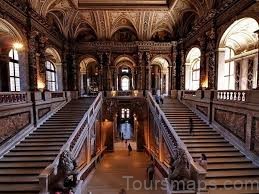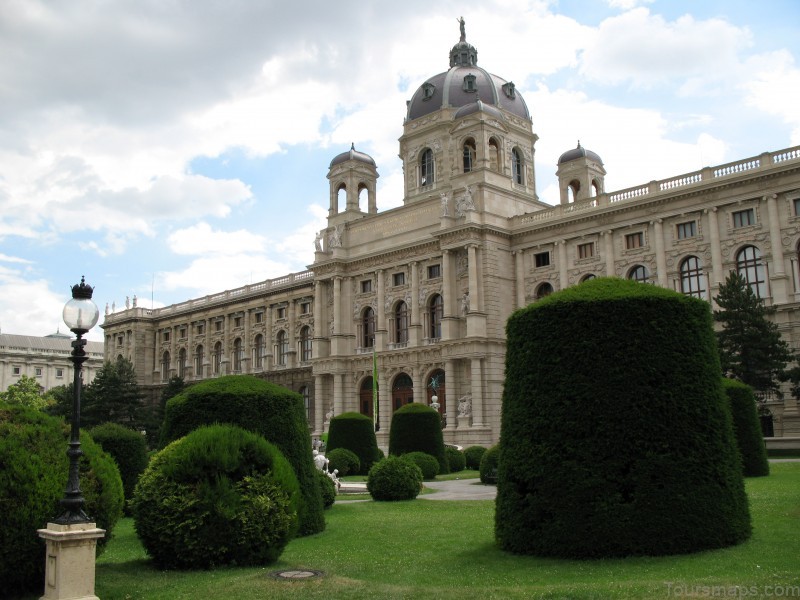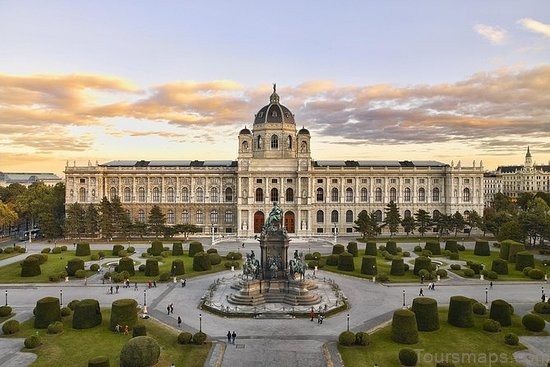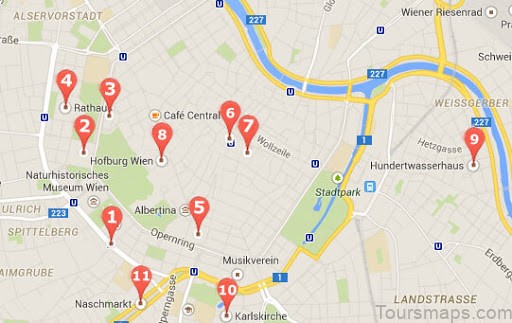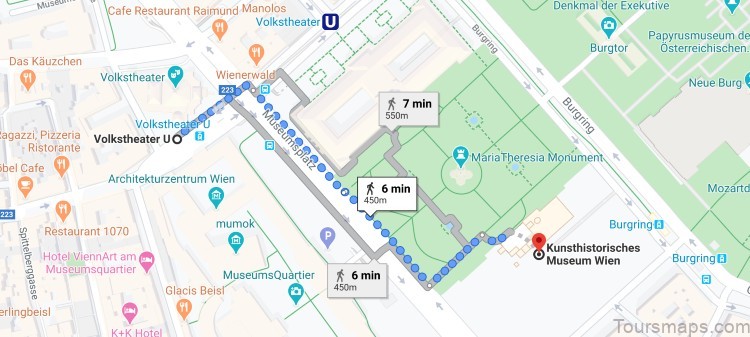KUNSTHISTORISCHES MUSEUM | MUSEUM OF FINE ARTS -GUSTAV KLIMT AND OVER 600 YEARS OF ART COLLECTING
The Kunsthistorisches Museum
The Kunsthistorisches Museum in Vienna was built exclusively for the preservation of the art collections of the Habsburgs. The construction of the Kunsthistorisches Museum and the Naturhistorisches Museum, both located on Ringstrabe right across from the New Castle, was begun in 1872 by the architects Gottfried Semper and Karl Freiherr von Hasenauer.
Construction took nine years and the museums were built in the historicist style of the neo-Renaissance. It took another ten years to complete the interior work.
After entering the Kunsthistorisches Museum through the main entrance, you arrive in the monochrome and elegant entrance hall. The patterns on the floor of the entrance hall are repeated in the dome above. The dome and its opening quote the Pantheon in Rome and thus emphasize the Habsburg’s entitlement to their imperial world supremacy.
On the left side of the entrance hall you can find the Kunstkammer or Cabinet of curiosities with the small curious and unusual objects from the Renaissance to the Baroque period. Many famous artists are represented here with best small sculptures.
The Kunsthistorisches Museum Vienna Photo Gallery
On the right side of the entrance hall you can reach the Egyptian Collection and the Collection of Antiquities located on the mezzanine. To this day the configuration of the exhibition rooms has been maintained true to its original condition. The presentation of the Egyptian Collection is most impressive. The original garnet columns of an Egyptian temple serve as ceiling supports and the cult chamber of the tomb of the Egyptian official Ka-ni-nisut was transported here piece by piece from Giza and then reconstructed true to the original.
The splendid middle stairway made out of Carrara marble leads into the great staircase. The monumental sculpture Theseus Fighting the Centaur by Antonio Canova is located on the landing of the staircase. To the right of the statue is a bust of Emperor Franz Joseph I . You will encounter his distinctive sideburns and mustache more often on your tour through imperial Vienna.
Now take a look up at the ceiling painting. You are now seeing The Triumph of the Renaissance by the painter Mihaly Munkacsy. Especially interesting are the architectural elements in the painting because they function as an extension of the real architectural elements of the museum’s staircase.
The staircase is richly decorated with murals. Under the ceiling paintings of the staircase you can see lunettes painted in triads on all four sides. They depict famous painters with their models. Underneath the lunette paintings, in between the black and white patterned columns, are the famous pendentive and intercolumniation paintings by Gustav Klimt, his brother Ernst Klimt and the painter Franz von Matsch. The featured motifs from the Greek Antiquity, Egyptian and Old Italian art were carried out by Gustav Klimt.
Besides the substantive Egyptian and Antiquities Collections, you will also discover the largest collection of paintings by Pieter Brueghels— , as well as key works by Arcimboldo, Giorgione, Titian, Rubens, Caravaggio and Tintoretto. Well worth seeing are the vedute of imperial Vienna by the Venetian painter Canaletto. They convey an impression of what Schonbrunn Castle, Belvedere Castle , as well as Vienna’s inner city looked like during the time of Empress Maria Theresa.
If you do not want to hurry through the collections of the Kunsthistorisches Museum, you should plan at least two hours for your visit. A coffee break in the magnificent Cupola Hall on the first floor of the museum might become one of your favorite memories of your visit to Vienna.
Museum of Fine Arts | The Kunsthistorisches Museum
Address: Maria-Theresien-Platz, 1010 Vienna
Public transport: Underground U2 Museumsquariter
Opening hours
Tue – Sun 10 am to 06 pm / Thu 10 am to 09 pm
Closed: Monday and all public holidays
Maybe You Like Them Too
- The Carriage Museum Vienna
- Austria Map Political – Google Map of Vienna, Austria
- Map of Vienna State Opera Wiener Staatsoper
- THE AUGUSTINIAN CHURCH -HABSBURG DYNASTY AS THE PHARAOHS ON THE DANUB
- Map of New Castle in Vienna

